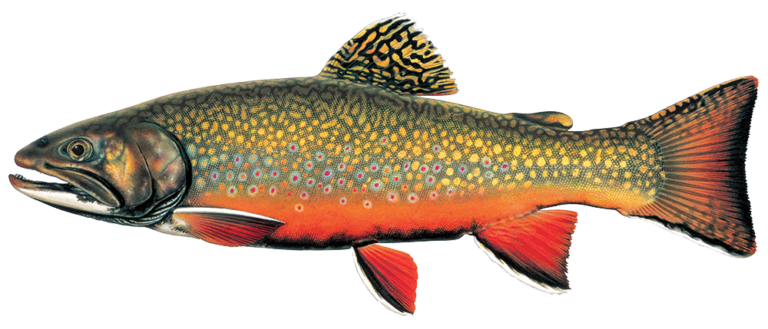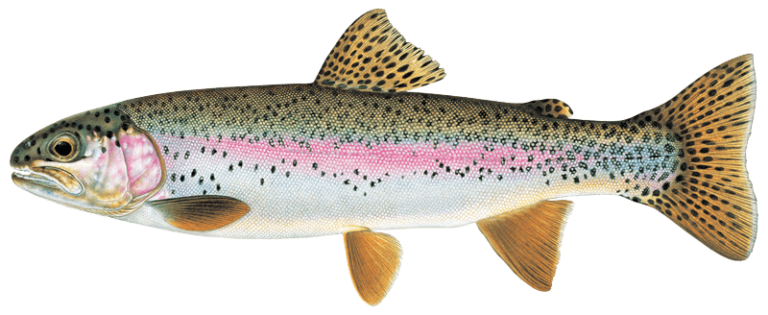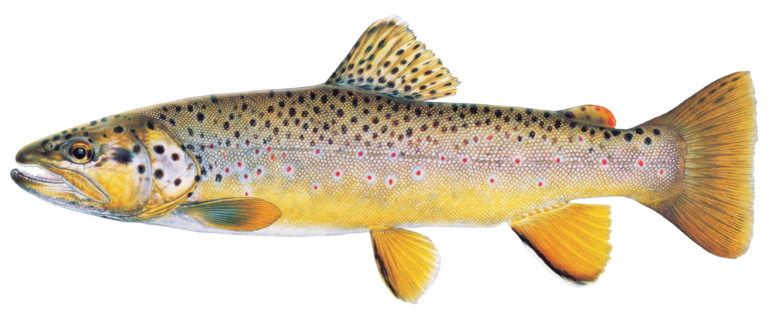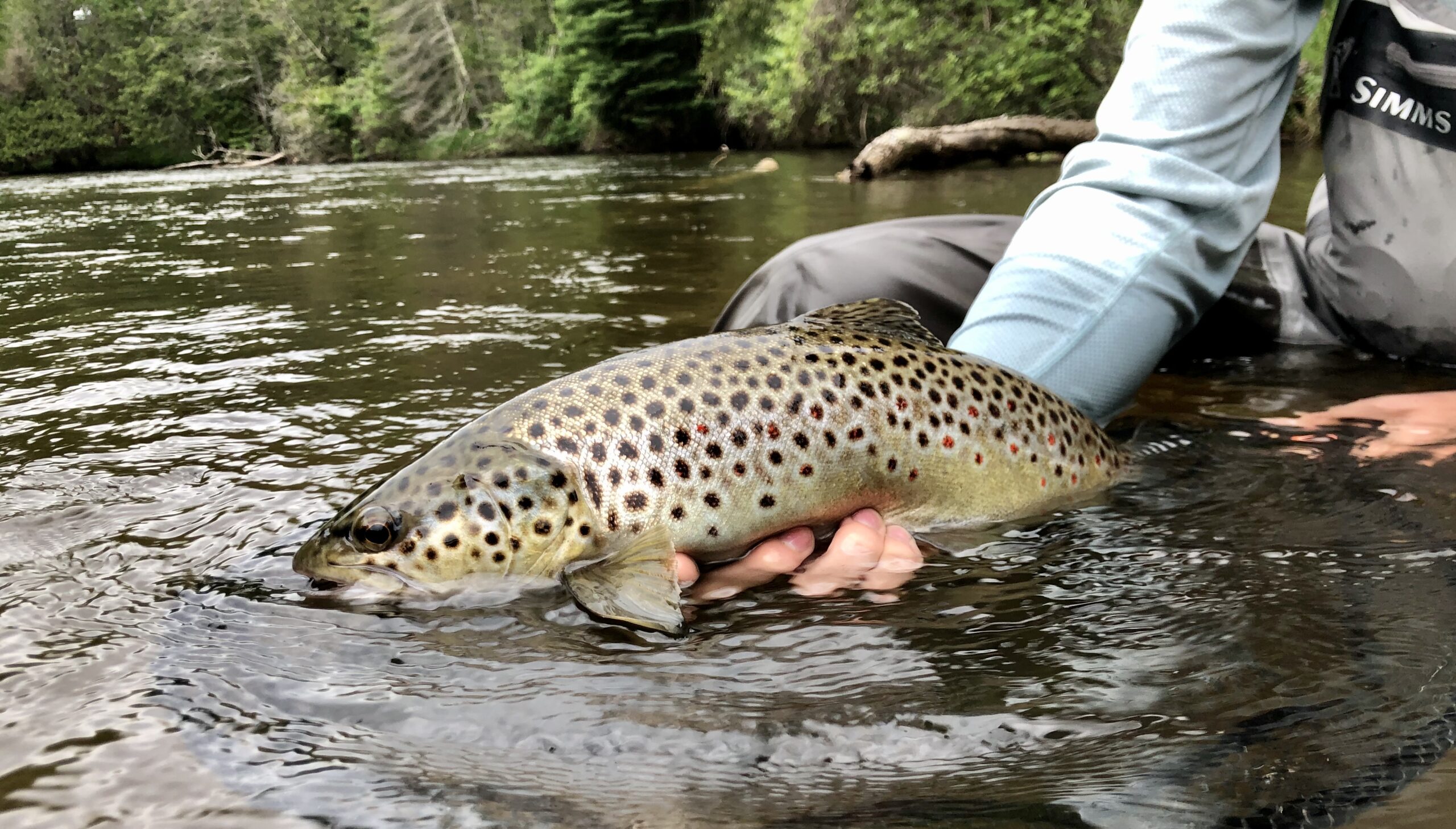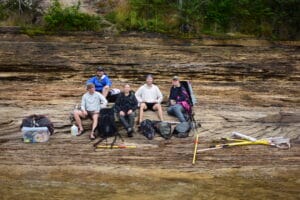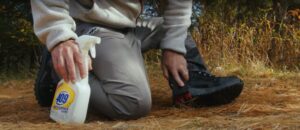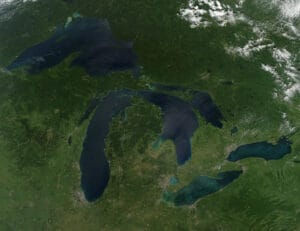Michigan

Overview
Michigan’s large coldwater rivers are unique trout strongholds in the Great Lakes region, supporting robust populations of native brook trout and wild brown and rainbow trout. Iconic waters like the Au Sable – where Trout Unlimited was founded in 1959 – the Manistee, and the Pere Marquette, and hidden gems like the White River, bring anglers from around the world to the northern Lower Peninsula. Across the Straits of Mackinac, native brook trout thrive in the Upper Peninsula’s Manistique River watershed and across several wild western Upper Peninsula watersheds flowing to Lake Superior, where a remnant population of wild native coaster brook trout grows large in Great Lakes waters. TU is leading collaborative efforts across Michigan to identify the most pressing threats and greatest opportunities for wild and native trout conservation. We’re doing on-the-ground work to conserve these unique coldwater resources through dam removal, road stream crossing replacements, riparian plantings, and in-stream habitat.
Threats & Opportunities
Michigan’s trout rivers can be a climate stronghold for native brook trout and wild brown and rainbow trout, but over a century of legacy industrial harm to rivers impede their potential as climate change threatens to warm them in the coming decades. TU’s work in the region removes failing dams, replaces road stream crossing barriers, and restores riparian and in-stream habitat. Our work is key to making streams resilient to warming temperatures.
How We Work
Reconnection
With investments from the Bipartisan Infrastructure Law, we are removing dams and replacing road-stream crossings to open miles of coldwater habitat for native brook and wild brown and rainbow trout throughout Michigan, and cool large sections of rivers even more than climate change is predicted to warm them.
Restoration
By replanting native trees (by the tens of thousands), restoring riparian zones, and rebuilding in-stream wood lost to historic logging, we are restoring fish habitat in Michigan’s priority trout streams, improving water quality, and recovering critical ecosystems.
Collaboration
Working with federal, state, and local agencies, including NOAA and the Fish & Wildlife Service, as well as tribal, university, and nonprofit partners, we are building communities invested in trout and salmon restoration.
Temperature Monitoring
By identifying places where groundwater influences keep streams colder, we are focusing our work in the places where wild and native trout populations will survive warming temperatures. Drones fitted with LiDAR are bringing a cutting edge to the work.
How You Can Help
Help us care for and recover Michigan’s wild trout waters.
TAKE ACTIONStay up to date about how Trout Unlimited is improving rivers and streams in Michigan and how you can help.
Michigan Conservation Team

Nichol DeMol
Great Lakes Habitat Program Manager
nichol.demol@tu.org
Great Lakes Habitat Program Manager
nichol.demol@tu.org
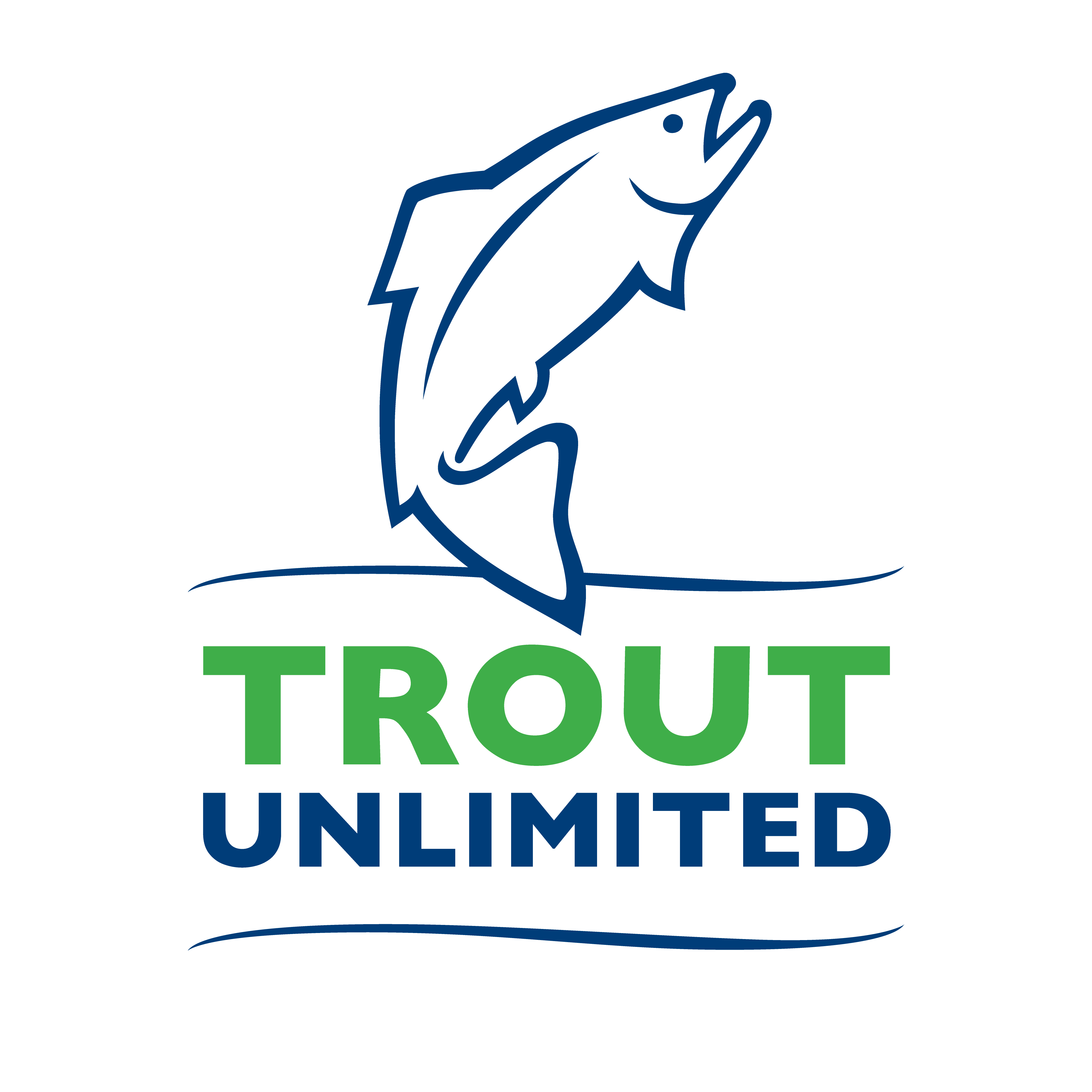
Bryan Burroughs
Executive Director, Michigan Trout Unlimited
bryanburroughs@michigantu.org
Executive Director, Michigan Trout Unlimited
bryanburroughs@michigantu.org
Priority Waters

-
Manistee
Located in the northwest region of the Lower Peninsula, this is one of the most stable river systems in the country. The main stem and nearly all its tributaries support robust populations of brook, brown, and rainbow trout, as well as migrating steelhead and salmon. Despite its relatively healthy condition, more than 500 road-stream crossings in the watershed may present barriers to upstream trout passage and be in need of replacement.
-
Au Sable River
The Au Sable River, in the northern region of Michigan’s Lower Peninsula, is one of the most iconic coldwater rivers in the country and the place where TU was founded. Much of the mainstem and most of its tributaries are designated trout streams that support robust populations of brook, brown, and rainbow trout. The Au Sable is a renowned fishery with a large group of stakeholders focused on protection and improvement.
-
White River
The White River watershed in west central Michigan is a rare large river with temperatures that remain cold throughout the summer. It is a critical climate refuge for trout. The river has two branches, the South Branch, which starts in Newaygo County, and the North Branch, which begins in Oceana County. The 538-square-mile watershed supports varied land use, with portions of the watershed located in the heart of the region’s Fruit Belt, while 23 percent consists of national forest.
-
Pere Marquette River
The Pere Marquette River is a high-quality trout stream in Northwest Michigan. It is a federally designated Wild and Scenic River, and a state-designated Natural River and Blue Ribbon Trout Stream. The Pere Marquette offers anglers unique year-round opportunities to fish for brook trout, brown trout, and migrating steelhead, coho, and Chinook salmon. Despite healthy conditions, dam removals, road culvert upgrades, and habitat enhancements can improve its condition, and water quality monitoring can help TU and our conservation partners understand baseline conditions and prioritize restoration.
-
Manistique River
Located in the Upper Peninsula, the Manistique watershed drains more than 1,400 square miles, a significant section of the peninsula containing dozens of trout tributaries. Historically, the Manistique received wastes from sawmills, a paper mill, small industries, and the municipal wastewater treatment plant. The watershed was heavily logged and subsequently burned, which contributes to sediment issues in areas of the watershed. Yet, native brookies and wild brown trout inhabit the Manistique River watershed and have the potential to thrive through robust restoration work.
-
Western Upper Peninsula
The western portion of Michigan’s Upper Peninsula consists of high-quality watersheds that have remained relatively healthy and intact due to a relative lack of human disturbance. The Ontonagon River main stem and almost all tributaries are designated trout streams that support robust populations of brook, brown, and rainbow trout, as well as steelhead and salmon. The Brule and Paint Rivers are also National Wild and Scenic designated rivers and trout streams. Despite relatively pristine conditions, land use practices and predicted climate change pose a direct threat to brook trout.
-
Coaster Brook Trout
Typically growing to larger sizes than stream resident brook trout, coaster brook trout use lake habitats to complete a portion of their life cycle. Once widely distributed in the Lake Superior watershed, few remaining populations are currently known to exist in Lake Superior tributaries in the Upper Peninsula of Michigan, as well as Wisconsin and Minnesota. The decline was likely caused by a combination of over-harvest and watershed degradation. To date, stocking efforts aimed at the restoration of coaster brook trout have been largely unsuccessful, but a rejuvenated conservation effort aims to restore them to fishable populations.

